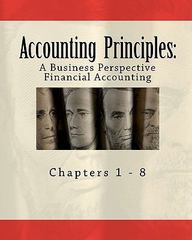Question
I have a very long long set of linked questions below, some of which I answered, some I need your help with. I included the
I have a very long long set of linked questions below, some of which I answered, some I need your help with. I included the questions with my answers to the first few questions. Could you please answer the rest below?
-------------------------------
The City of Cambridge is concerned about the number of wild MIT students who will be partying on Halloween and wants to limit the number of parties in order to curb the costs of policing underage drinking and noise violations. The city has asked you to evaluate the welfare implications of policies they are considering. Think of price here as the amount of money party hosts will collect at the door from party-goers. The demand for parties is given byQ=300?2p. The supply of parties is given byQ=p
.
Find the equilibrium price and quantity in the market for Halloween parties.
Answer: p=100 and q=100
Now suppose that the city has found a fail-safe way to tax parties by requiring each party host to pay a fee of $60. Find the new price for party-goers, the after tax price received by the party hosts, and the new equilibrium quantity.
Letps be the price the suppliers receive (after the tax),pc be the price the consumers pay for each party, andQt be the after tax quantity.
Answer: ps=60 pc=120 Qt=60
Questions I need help with are below:
- What is the deadweight loss of the tax?
- Consumer surplus post tax?
- Producer surplus post tax?
- Tax revenue?
More questions in the picture below

Step by Step Solution
There are 3 Steps involved in it
Step: 1

Get Instant Access to Expert-Tailored Solutions
See step-by-step solutions with expert insights and AI powered tools for academic success
Step: 2

Step: 3

Ace Your Homework with AI
Get the answers you need in no time with our AI-driven, step-by-step assistance
Get Started


